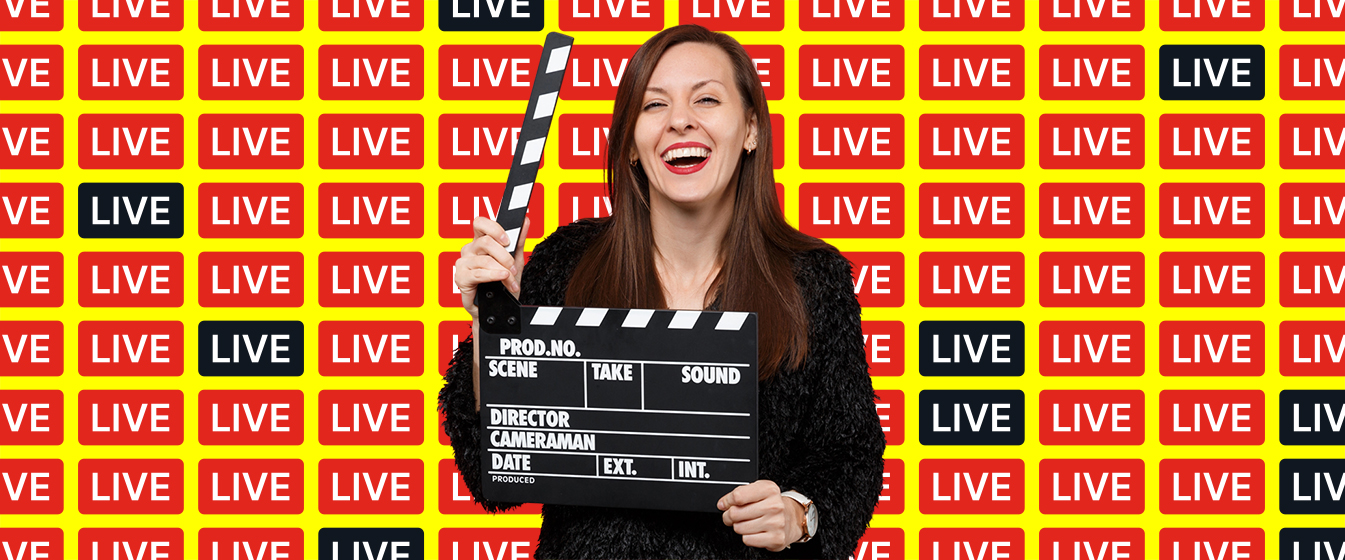Blog: Event design
Hybrid can work for customer events. Here’s how.
30 May 2023 minute read

In an ideal world, companies would always be in a position to connect with customers and prospects through face-to-face interaction, demonstrating their products and services up close in an immersive yet convivial setting.
But we don’t live in an ideal world.
Not all of your customers can travel to all of your events. Honestly, not all of them need to. And if the pandemic convinced people of anything, it’s that they can do more from home.
So the hybrid approach is here to stay for a great many customer events. Which is great because it enables brands to be more inclusive in their experiential marketing. But less great because the live-hybrid aspect of events isn’t easy to pull off.
If they were being totally honest, many corporate event marketers would admit to viewing hybrid as something of a poisoned chalice. You invest a disproportionate amount of time (and budget) trying to capture as much of the live experience as possible, fully aware that, however hard you try, your digital audiences are still going to feel like second-class participants.
This ‘two-tier’ concern puts a lot of companies off using a hybrid approach for customer events – the central objective of which is normally to make customers feel valued, included, listened to (and generally loved).
Fortunately, by applying a smart approach to serving a simultaneous virtual audience, the hybrid format can be deployed to powerful effect – leaving everyone feeling more connected with your organisation – whether they were physically in the room or not.
Let’s start with the good news.
Most virtual attendees don’t expect a full hybrid experience, nor do you have to livestream the entire event for hybrid to work.
People have been forced to become much more adept at interacting and consuming knowledge virtually over the past few years. They know how to get what they need out of an online event and (critically) they have realistic expectations.
They know they’re going to miss out on the free bar and the (slightly past their best) DJ playing funky house into the small hours. And they have made their peace with that.
For virtual attendees, the event does not have to last all day. The laptop crowd is looking for a shorter, well-structured, customer-focused programme that retains a sense of live urgency.
Most of all, they’re looking for the chance to connect and share ideas with peers through the shared experience of your company and its products.
Here are some tactics that really work:
Try combining live and pre-recorded content.
Mixing live and pre-recorded presentations and sessions massively extends your options when it comes to adding value for the virtual portion of your audience.
Pre-recording a set of sessions ahead of time makes virtual events easier to manage. It also allows you to showcase speakers, roundtables and other sessions that would be logistically difficult to present in real-time or too cumbersome to record ahead of time.
Your event platform should offer a ‘simulated live’ feature – which enables you to pre-schedule a session you recorded in advance and stream it at a set time – as though it were being broadcast live.
If you run simulated live sessions, consider having a live question/answer chat, or a way for attendees to contact your product experts during the broadcast.
And if you do combine live and pre-recorded content in your programme, it can be a good idea to indicate which is which in the agenda.
We see lots of organisers who think they should hold on to content from the live event, waiting several days (or more) before making it available to stream. Why? Where’s the value in making your virtual attendees feel like second-class citizens and taking some of the live currency out of your event?
A mix-and-match approach can give you a more engaging programme without the need for a huge technical broadcast budget.
Informal, peer to peer sessions.
Consider setting up an informal video chat space for customers – or (better yet) types of customers based on common factors such as job function, location, industry, use-case type – whatever works. It’s often enough to give people just a few words of introduction to mention what they all have in common and set out a few common challenges.
Marketers often want to try to manage the detailed direction of every session at a company event (lest senior management hears something they don’t like). But resist the temptation to overthink here. Sometimes the best thing a vendor can do is to put customers together in a room, and then just step aside.
Discussion and knowledge-sharing will flow organically, with people sharing tips and ideas for how to use the product and how to improve it. Yes, there will be some complaining and some venting too – but there’s huge value in that.
Online participants will feel truly involved and the intelligence and insights you get will be all the better for it. Often one or two loud voices will tend to dominate these sessions, so be ready to step in with a bit of light-handed facilitation as needed to ensure that everyone in the peer group is getting airtime.

Resource the chat properly.
A free-flowing online chat can be revealing and engaging – but good chats require resources to manage. Not to manage the conversation itself, but to handle the information requests that inevitably come out of it. So make sure you have facilitators on hand to answer questions and be ready to summon subject experts to hop online if needed.
Don’t stress if virtual attendees aren’t really watching the sessions.
There is no rule that those in chat should be paying attention to your stream – yes, even the keynotes! The live moment of connection outweighs replayable content! An active chat is gold – and is not an insult to speakers. You can cover three-to-five times more ground, and plenty more questions, if you have an active chat – and staff on hand to answer questions in the chat.
Your primary goal should be to bring about connections between participants, not force people to shut up and listen to a speaker when (let’s face it) they can usually find similar content on YouTube anytime. It’s the live interactions around the content that really inform and inspire people. For virtual attendees, most of the opportunities for that are in the chat.
Be creative with how you use live panellists.
For example, could you have your live speakers conduct a Q&A exclusively with virtual attendees right after they walk off stage?
Just have a sofa or some chairs set up backstage. It doesn’t have to look fancy – indeed the casual, immediate vibe will only add to the sense that speakers are being really candid.
Having collected questions from the online audience during the session, have the facilitator put the most interesting ones to your speakers so they can answer directly to that part of your audience.

Be creative with how you use your own company experts.
Could you have some of your product leads conduct virtual-only sessions on an unused stage while other live content is happening?
Might you use the time to do a deep-dive into particular new features or updates?
Giving virtual attendees the chance to get closer to your experts in this kind of short, workshop-style environment, will help compensate for the more organic, coffee-break style interactions they could expect to have if they were there in person.
But know when hybrid won’t work.
Of course, not all customer events lend themselves to a hybrid element.
Smaller, highly interactive events, like VIP customer sessions, regional user group meetings, analyst summits and the like, probably shouldn’t be hybrid.
Why? Because the virtual attendees wind up with a second-rate experience, with inferior participation options. A textbook example would be the analyst event, with a dozen participants gathered around a table all day, with some poor virtual soul dialled-in on a speaker phone.
But for larger, more traditional customer events, a hybrid structure is not something to be afraid of. And the first step to success is rejecting the mindset that hybrid is basically the business of passing virtual attendees scraps from the in-person table.
An added bonus of investing time in really levelling up your hybrid structures is that you can go on to apply some of these same approaches to your virtual-only events, keeping your audiences better connected throughout the year. You can even partly re-engineer your webinar series with these techniques.
Attendees can tell when we’re really trying to help them stay connected and get the most out of an event, wherever they happen to be. And the companies who make customers feel heard and valued, tend to be the ones that win.



